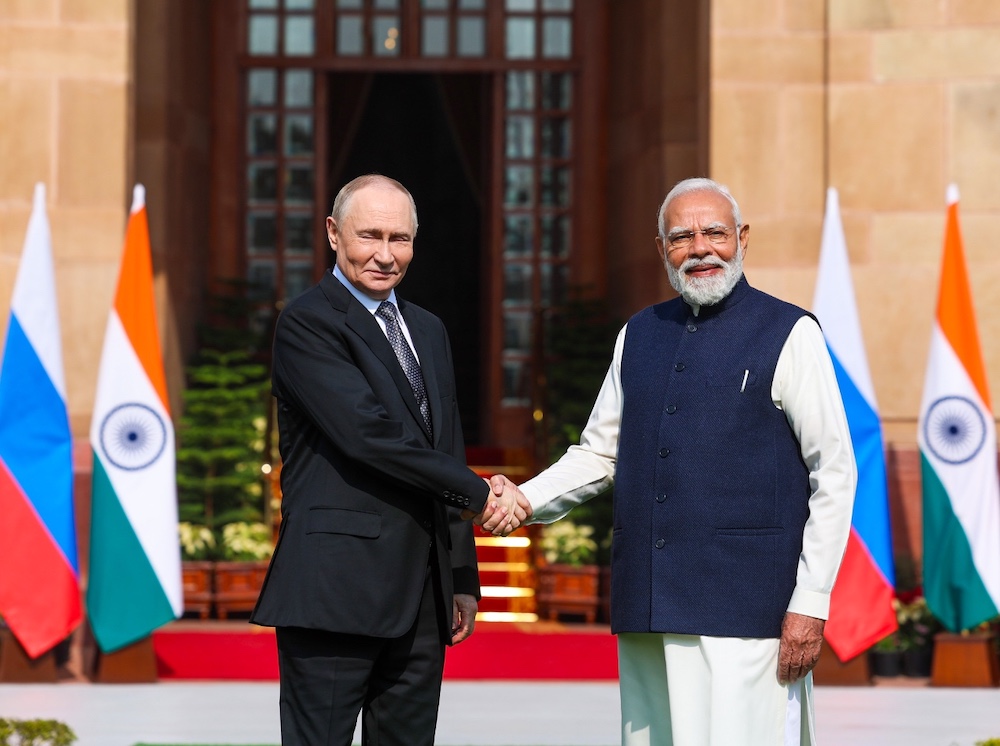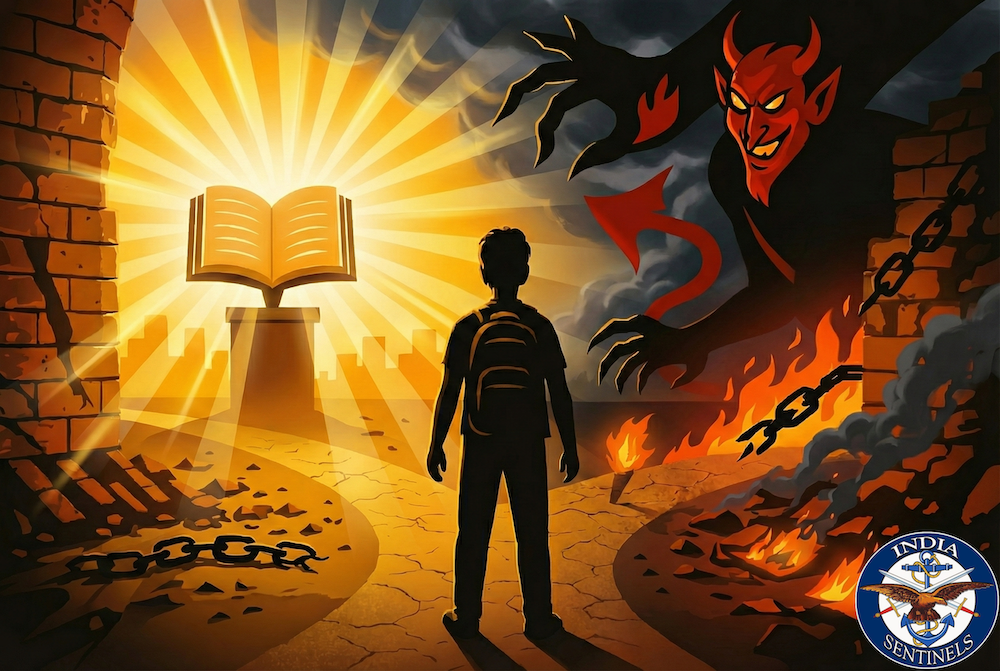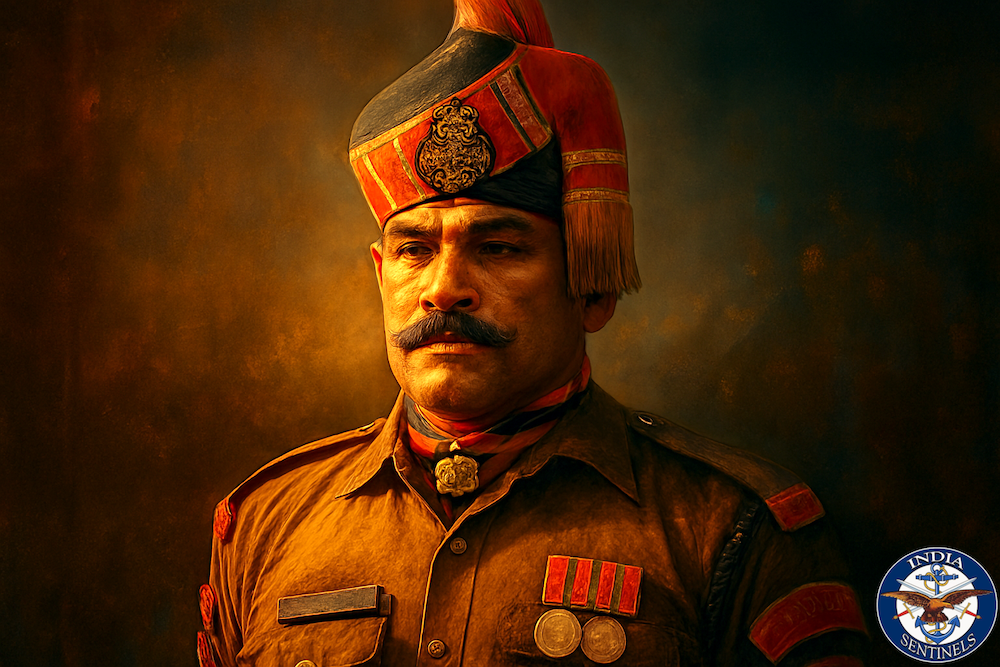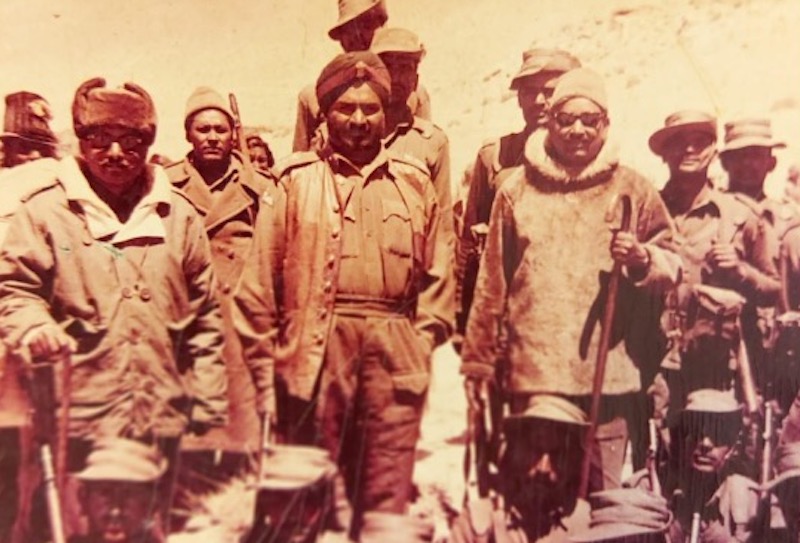 Brig Rawind Singh Grewal, MC (C) with Lt Col Bakhtawar Singh, CO 5 Jat, (L) Lt Col Nihal Singh CO 14 J&K Militia (R) and troops of both the units. (Photo courtesy: Devraj Singh Jagat)
Brig Rawind Singh Grewal, MC (C) with Lt Col Bakhtawar Singh, CO 5 Jat, (L) Lt Col Nihal Singh CO 14 J&K Militia (R) and troops of both the units. (Photo courtesy: Devraj Singh Jagat)
“The Himalayas had been rudely woken up from their long, deep slumber. This hitherto impenetrable barrier had been pierced by the lustful designs of man for power and supremacy.” – Major Jagjit Singh
In all wars, there are always unsung heroes whose tales of grit, valour, and extraordinary feats while facing unimaginable adversities get buried never to see the light of the day. This is an effort to bring out to the world one such story from 1962 India-China war that took place in the cold desert of Ladakh. The operation of Daulat Beg Oldie.
In 1960, the Indian Army was given responsibility for the northern borders. This resulted in the induction of Brigadier Rawind Singh Grewal, MC, who commanded the 114 Infantry Brigade, which included the 7 J&K Militia and the 14 J&K Militia. The 1/8 Gorkha Rifles, led by Lieutenant Colonel Hari Chand, MVC, became the force’s third battalion in April 1961. These battalions were assigned to three different areas. The 14 J&K Militia oversaw the area north of the Galwan river. The 1/8 Gorkhas were responsible for the area between Galwan and Chushul, while the 7 J&K Militia were given the responsibility of the southern territory, consisting of the Indus Valley.
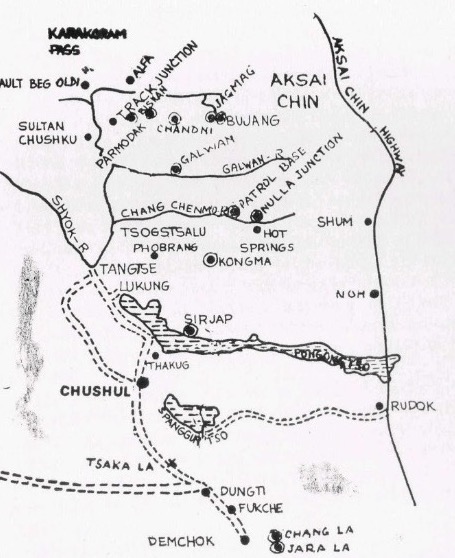 A rough map of Ladakh front in 1962 by Maj Gen Jagjit Singh.
A rough map of Ladakh front in 1962 by Maj Gen Jagjit Singh.
In April 1961, a platoon of the 14 J&K Militia was given the responsibility to establish a post at Daulat Beg Oldie, also termed as the “Gateway to Hell” by old traders. It was 16 kilometres southeast of the Karakoram Pass. Survival in the terrain and severe weather was challenging in this region, and the enemy came after that. In those days, Ladakh’s connectivity was also very poor, with only a Jeepable road connecting Chushul and Leh. Therefore, air supply was the only way to keep posts operational.
Read also: ‘Honour, Enfield, and Panama’ – The story of Lt Yog Raj Palta
In the early stages of the 1962 India-China war, Ladakh had only four battalions – 1/8 Gorkha Rifles, 14 J&K Militia, 7 J&K Militia, and 5 Jat, led by Lt Col Bakhtawar Singh, which was inducted from Uri in April 1962, along with a company of 1 Mahar (MMG). These four battalions covered a front of 480 kilometres from DBO in the north to Demchok in the south.
Brig Rawind Singh Grewal was promoted and transferred for his new assignment in July 1962, and he was replaced by Brig Tapishwer Narain Raina, a Kumaoni officer who was fondly known as Tappy Raina.
In addition to the 14 J&K Militia, C Company of 5 Jat were also in the DBO sector. On the north and south banks of the Chip Chap river, 9 posts were established, and 5 posts were established opposite Murgo and Sultan Chushku.
Every post had only five to 25 men.
Post 1 was named Chandni, and it had a platoon strength as well as a 3-inch mortar section. Posts 2, 3, 4, 5, 7, and 14 had platoon strength (of 30 men), while the remaining posts had sections (of 10 to 11 men). The average distance between each post was 2–3 kilometres, but Post 14 (named Jyotish) was 12 kilometres away from any Indian post.
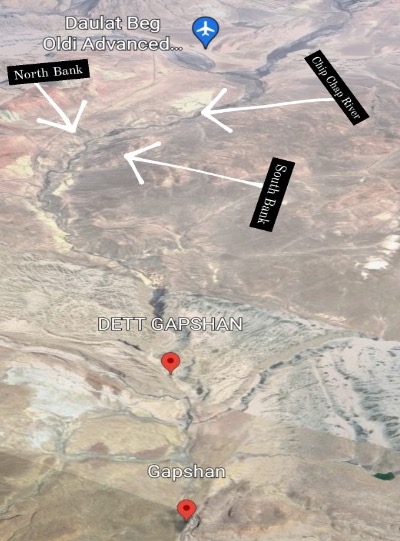 A map showing banks of Chip Chap river.
A map showing banks of Chip Chap river.
All the posts were equipped with small arms and less ammunition in comparison to the enemy.
On the eve of the war’s first day, the Chinese began to gather and bring heavy weaponry. At Qizil-Jilga, they had a regiment with two units for attacking and one reserved. Posts 5 and 9 were attacked at the same time on October 19 at around 11pm.
Read also: ‘Fire Till Eternity’ – The story of Major Shyamal Dev Goswami
Post 5 (named Pramodak) was the tiniest post in the sector, with only four men under Havildar Tulsi Ram of 5 Jat. It was attacked by two Chinese companies, but due to the post’s altitude, the men of 5 Jat dominated and held the post until the Chinese began shelling. Except for the non-commissioned officer (NCO), who decided to continue to strike the machine gun, all four men died. As his ammunition was running out, Hav Tulsi Ram slipped out of the way with his gun and went downwards to DBO. He was later awarded the Vir Chakra (VrC). Pramodak fell.
Post 9 was manned by 11 men from the 14 J&K Militia under the command of Company Havildar Major Anant Ram and was under heavy mortar and medium machine gun (MMG) fire. The Chinese remained outside the range of the Indian weapons but were inflicting damage on the Indian side with their longer-range weapons. The Chinese shelled the post for nearly an hour, killing four men, before the infantry surrounded it. With his remaining men, Hav Anant Ram found an opening and managed to extract his men while inflicting heavy casualties on the Chinese soldiers. Hav Anant Ram was awarded the VrC for his bravery.
On October 20, both posts 5 and 9 fought until first light. The Chinese occupied Post 5 and cut off the other posts’ withdrawal and supply routes. Around 2.30am, the Chinese attacked posts 2 and 3 manned by the Jats on the north bank of Chip Chap. However, after giving a good fight to the Chinese, the men of these posts withdrew to Post 4.
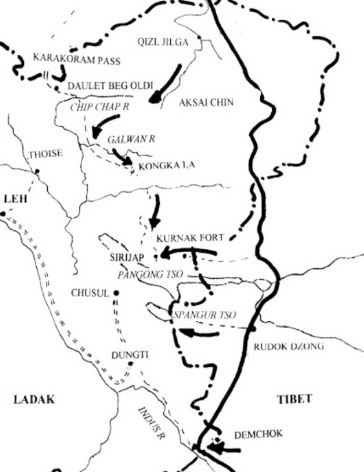 A rough map showing Chinese attacks in Ladakh.
A rough map showing Chinese attacks in Ladakh.
Post 1 (named Chandni) was on a high ground which made it difficult for the enemy to fight. However, it was now isolated as every post around it had been abandoned or occupied by the enemy. The post was manned by Subedar Sonam Stopdhan, who had 25 other ranks (ORs) from the 14 J&K Militia. On October 20, Chandni was heavily shelled and subjected to a large infantry assault. The officiating commander of DBO, Major Shardul Singh Randhawa, attempted to send reinforcements, but Chinese at other posts made it impossible. The Indian troops put up a heroic defence and stymied three attacks, but the Chinese outmanned them and overran the post, killing everyone on it. Chandni fell. When Maj Randhawa got this information, he passed the message to Brigade Major Jagjit Singh in a very emotional voice. He said: “Chandni khatam ho gayi. Chandni jal gayi” (Chandni is finished. Chandni is burned down.) Subedar Stopdhan was awarded the Maha Vir Chakra (MVC) and sepoys Chiring, Wangchuk, and Phunchok were awarded VrCs.
Read also: Battle of Walong – The story of Lt Bikram Singh Rathore
Post Bhujang, held by 15 men of the 14 J&K Militia under Naib Subedar Rigzin Phunphok, had a similar story. His post was subjected to heavy shelling before being attacked by infantry. The post fought valiantly, but it was vastly outnumbered. Few of the 15 men survived and fell back to Sultan Chushku. Hav Saroop Singh, who was killed in action at the post, was later awarded the MVC.
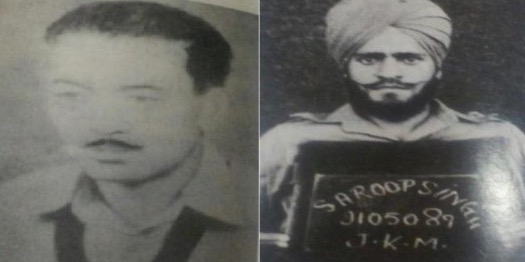 Subedar Sonam Stopdhan, MVC and Havildar Saroop Singh, MVC.
Subedar Sonam Stopdhan, MVC and Havildar Saroop Singh, MVC.
Every post was heavily mortar-bombed by the Chinese. Until now, the Chinese had eliminated all the posts on Chip Chap’s northern bank. Only Post 4 managed to resist. The Chinese were posing a direct threat to the DBO and track junction with Post 5 in their hands.
At 7pm on October 20, the Chinese began shelling Post 4, which had nearly 40 men and was in communication with the DBO OC, Maj Randhawa, who asked men of the 5 Jat to return to DBO. However, due to the pitch-black night, only 1 junior commissioned officer (JCO) and 9 ORs were found by the patrol sent from the DBO garrison.
By that time, only Post DBO, which had 125 all ranks, was. It was constantly in contact with the 114 Brigade.
Post 10 was attacked in large numbers, and they requested a withdrawal to Burtse, which was located north of Murgo. The enemy occupied the post. East of Murgo was Post Jodha, which was manned by a platoon of 14 J&K Militia, was attacked from the north on October 21. The post fought effectively but was surrounded by nearly two companies of Chinese soldiers. Three men were killed in action, four were wounded, and two were taken prisoner.
Except for isolated Post 14, Jyotish, all isolated posts were ordered to fall back to Burtse on the night of October 21.
The post commander reported heavy enemy concentration opposite the post at 1pm on October 21. Until now, Lt Col Nihal Singh, CO 14 J&K Militia, flew in from Thoise to DBO. Following his conversation with the, he ordered Post Jyotish to fallback to Sultan Chushku.
By this time, DBO was surrounded. Eighteen posts had fallen on October 20 and 21. On October 22, the battalion commander asked for a withdrawal from the brigade. Later, the corps issued an order to withdraw to a better defensive position. Maj Randhawa also conveyed a message via the pilot of the helicopter that the Chinese concentration could pose a serious threat to Leh.
At 6pm, the brigade ordered the withdrawal of the 14 J&K Militia. The operation began at 9pm. The only route now left was a difficult western route through Gapshan-Shyok-Saser Brangsa. To confuse and distract the Chinese who were intercepting the radio communication, the battalion commander also sent a false message to the brigade.
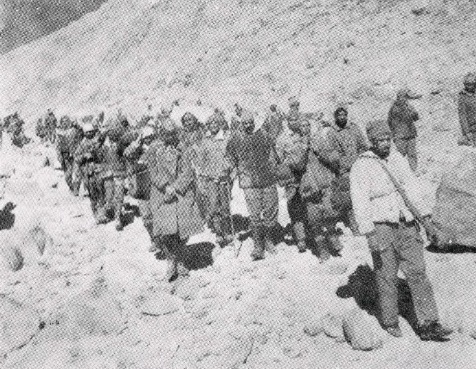 Retreat of 14 J&K Militia. (Photo from Maj Gen Jagjit Singh’s book “The Saga of Ladakh”)
Retreat of 14 J&K Militia. (Photo from Maj Gen Jagjit Singh’s book “The Saga of Ladakh”)
Weapons such as 3-inch mortars, recoilless guns, radio sets, and supplies were destroyed by retreating troops. The Indian soldiers were now given personal weapons and 100 rounds each. A platoon of 1 Mahar (MMG) attached to the battalion under the command of Naib Subedar Bhimu Kamble refused to destroy their guns and carried the weapons with them. It was a challenging retreat.
When Nb Sub Kamble learned that a gun from his platoon had been lost, he returned with his six men, despite the Chinese threat, and entered the abandoned post, grabbed the gun, and escaped back.
There were only a few vehicles, including a few Jeeps and one-tonne trucks loaded with sick and injured soldiers. These vehicles were using the river’s frozen surface, but the surface soon gave away due to the weight, and the vehicles had to be abandoned.
Read also: 1962 India-China War – The reality of a military defeat
The retreat was divided into three parties, with the advance party led by Maj Randhawa, who was well acquainted with the routes and the men of his battalion. The main body was led by CO Lt Col Nihal Singh, and the rear party was led by Captain SP Rigzin. The rear party platoon occupied the one dominant post and withdrew on the first light of October 23, while other troops were on their way to Saser Brangsa. Tired and carrying heavy loads, it was a test of the Indian troops’ endurance and training.
After reaching Saser Brangsa, casualties were evacuated by helicopter, and much-needed supplies were air-dropped.
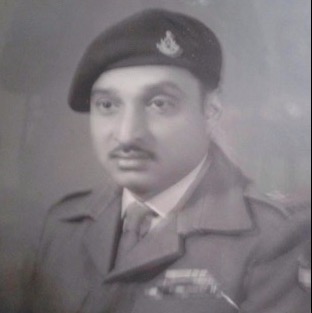 Maj (later Lt Col) Shardul Singh Randhawa, MVC.
Maj (later Lt Col) Shardul Singh Randhawa, MVC.
After October 23, there was no fighting in the DBO sector until the official ceasefire on November 21. The troops fought with grit and determination and bravery. Maj Randhawa, who was also awarded the MVC, deserves much of the credit for the successful retreat and operations in the DBO sector.
On October 24, all forward posts were withdrawn. DBO, the gateway to hell, was also abandoned. Troops kept control of the Saser Brangsa, Murgo, Sultan Chushku, and Galwan-Shyok junction.
Those men survived hell.
Follow us on social media for quick updates, new photos, videos, and more
Twitter: https://twitter.com/indiasentinels
Facebook: https://facebook.com/indiasentinels
Instagram: https://instagram.com/indiasentinels
YouTube: https://youtube.com/indiasentinels
Editor’s note: This story is based on the author’s conversation with various people who participated in the 1962 war or related to them, and carries references to Maj Gen Jagjit Singh’s book “The Saga of Ladakh: Heroic Battles of Rezang La and Gurung Hill”. All photos and maps are procured by the author.
Disclaimer: The views expressed in the article are the author’s own and don’t necessarily reflect the views of India Sentinels.
© India Sentinels 2022-23


